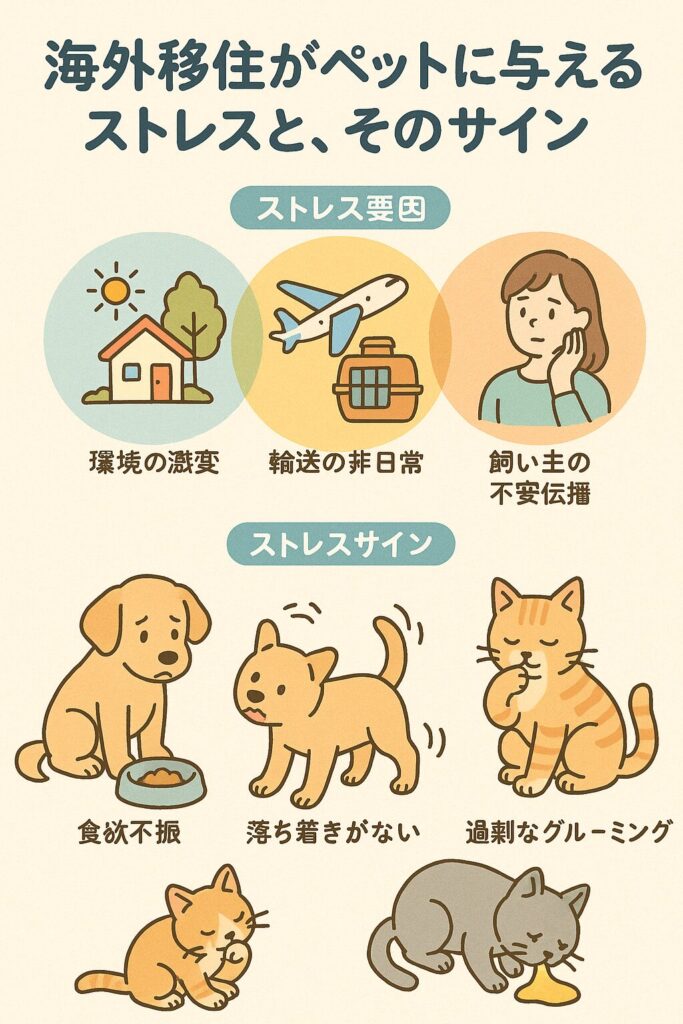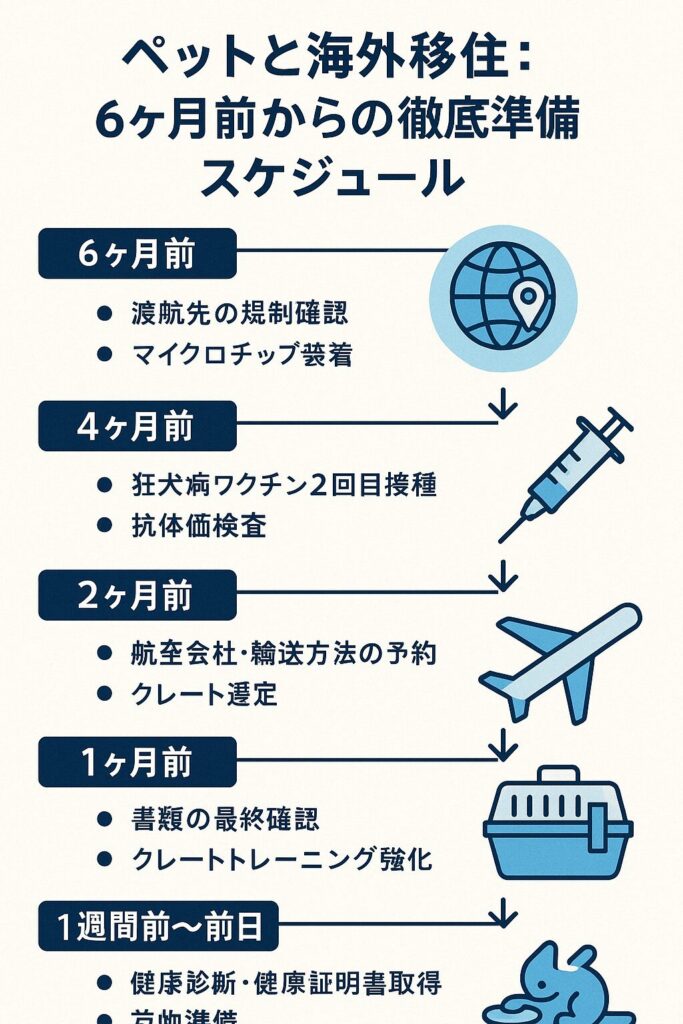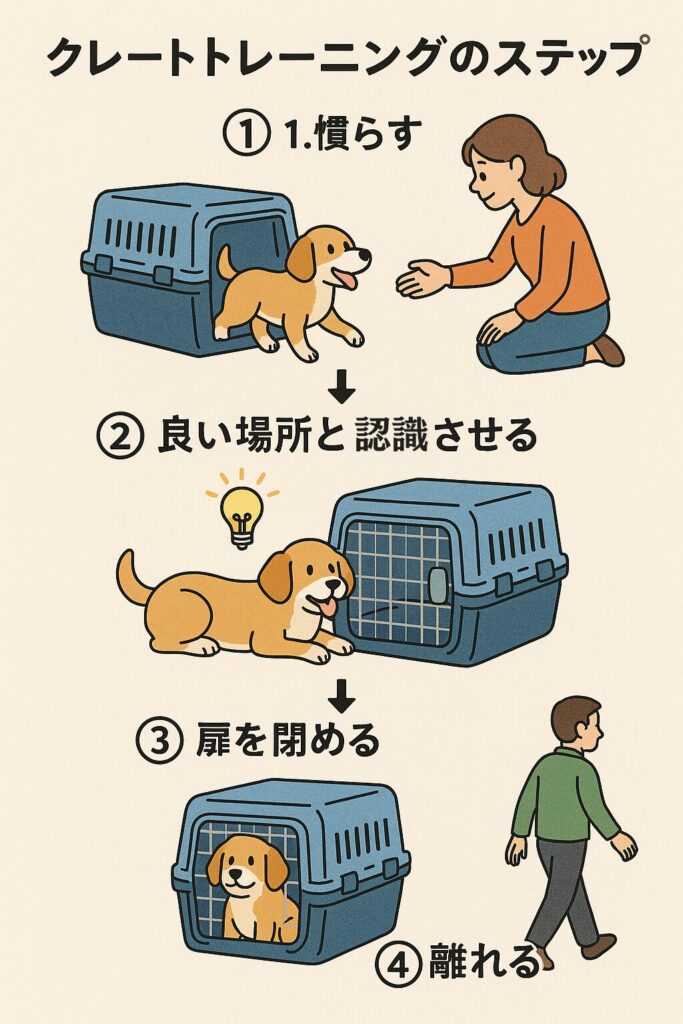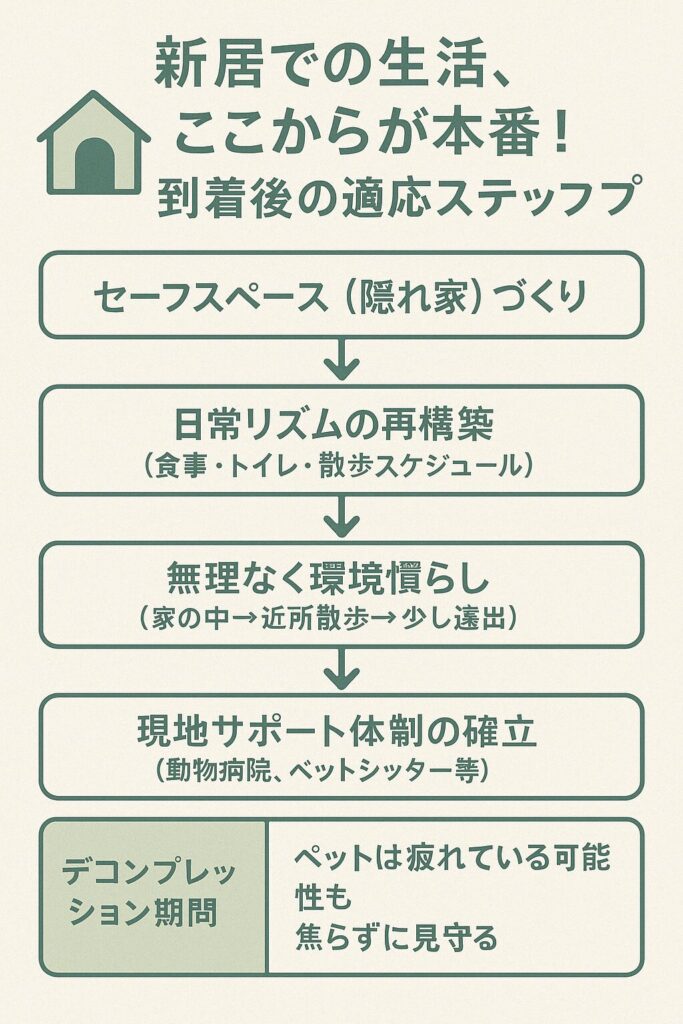I want to start a new life abroad with my beloved pet!"
This thought must be filled with great joy and hope for the pet owner. At the same time, however, they must also feel a great deal of anxiety about the stress and complicated procedures that pets who cannot speak may experience.
Moving abroad means a drastic change in environment for your pet and can be a tremendous stressor. But don't worry.With proper preparation and care, and above all, by being attentive to your pet's feelings, this stress can be greatly reduced!The following is a list of the most common problems with the
We at PetAirJPN are,More than 300 cases per yearAs an expert in the international transportation of pets in the United States and Canada, we have helped many pet owners and their pets relocate overseas. Based on that wealth of experience and expertise, this guide is a practical step-by-step guide to minimize the stress for pets and help both owners and pets start their new lives with peace of mind,Preparation, Transportation, and Adaptation.The following is a detailed explanation of the three phases of the project.
This article will help you understand the stressors that accompany pets moving abroad, and clarify the knowledge and specific action plan you need to take, from specific preparation steps, to care during transport, to support for adaptation in the new location.
Pets Moving Abroad: From Preparation to Adaptation
Why the Stress? How Moving Abroad Affects Pets

The first step in taking effective measures is to understand why moving abroad is stressful for pets.
- Drastic changes in the environment:. Familiar homes, smells, sounds, walking routes...all of these changes can cause great confusion and anxiety for pets. Even a change in daily routines such as eating and sleeping can be stressful.
- The extraordinary: transportation. Prolonged restraint in a crate (transport cage), the noise of airplane engines, changes in air pressure, and handling by strangers and in strange people and places can be extremely stressful for pets. Transportation in the cargo hold, in particular, adds to the anxiety of being separated from the owner.
- Propagation of owner anxiety:. Frustration and anxiety of pet owners who are busy preparing for a move are sensitively transmitted to their pets.In PetAirJPN's experience, it is very important for the pet owner to remain calm and prepared for the pet's emotional stability.
These stresses may manifest as signs of
- Behavior Change:. Restlessness, excessive whining or barking, hiding, loss of appetite or overeating, failure to use the toilet, excessive grooming, aggression, loss of energy.
- Physical changes:. Diarrhea, vomiting, tremors, rapid breathing.
It is important not to miss these signs and to take early action.
The most important phaseLaying the foundation for peace of mind through thorough preparation (6 months prior to departure -)

The key to success in moving abroad with your pet is early and thorough preparation, and at PetAirJPN, we can help you prepare for the move in as little as six months or more, depending on the destination, and even more if possible.Preparation begins 8 to 10 months in advanceis strongly recommended.
Know the rules of the destination country: gather information accurately and up-to-date.
Each country/region has its own strict regulations regarding the importation of animals (quarantine conditions, documentation requirements, vaccine requirements, banned/restricted breeds, etc.). If these requirements cannot be met,Refusal of entry or long-term mooringThis may lead to
Main Sources
- Embassy or consulate of the destination country
- Website of the animal quarantine authority of the destination country (e.g. USDA APHIS)
- Animal Quarantine Service (AQS) of Japan Website
It is fundamental to check primary information on these official websites.
Note: Always stay up-to-date!
Because regulations change frequently,It is essential to always check for the latest information.If you have concerns about gathering or interpreting information, please consult with a specialist as soon as possible.

The rules and regulations of countries of destination are really complicated and often change... It can be difficult to understand the information on websites alone. If you consult with us, we can explain the latest information in an easy-to-understand manner and help you smoothly go through the necessary procedures!
Health care and coordination with veterinary clinics: schedule well in advance
The veterinary procedures required for migration are diverse and each requires strict timing.Early consultation with a veterinarian experienced in international transportation or, in some countries, with specific qualificationsis the key.
Microchipping
15 digits of ISO standard (11784/11785)of the,Fitted before first rabies vaccinationDo not forget to check the readings and keep the certificate after installation. After installation, do not forget to check the reading and keep the certificate.
The following article explains microchipping in detail.
rabies vaccination
After microchipping,At least 2 doses after 91 days of age(Vaccination intervals and validity periods are regulated by each country). Inactivated or recombinant vaccines are effective.
The following article explains more about the rabies vaccine.
Rabies antibody titer test
Required in Japan (from outside the designated area) and some other countries.Testing at designated laboratory, reference value (>0.5 IU/ml), timing of blood collection, waiting period after testing (e.g., >180 days in Japan)is important.
Other vaccines and parasite control
Mixed vaccines and, in some countries, specific parasite control (e.g., echinococcal control in the U.K.) are required.
Medical Examination and Health Certificate
Just prior to departure (e.g., within 10 days), take a final medical examination and obtain a health certificate on a form designated by the destination country; endorsement by the USDA (U.S. Department of Agriculture) or other government agency may be required.
POINT: The chain of veterinary procedures is strictly enforced!
From PetAirJPN's experience: thisMicrochipping → Vaccination → Antibody titer test → Waiting periodThe chain of events is very important, and there is no end to the number of cases where a wrong order or timing invalidates everything and significantly delays the departure.Do not judge for yourself and always consult a professional or experienced veterinarian.
The official line also offers individual schedule consultations based on the requirements of each country. Please feel free to contact us.
Document preparation:Omissions are strictly forbidden.
Prepare all necessary documents (microchip proof, vaccine proof, original antibody titer test results, health certificates, import/export permits, airline documents, etc.) accurately and without omissions.
Most Important Confirmation
Please check the microchip numbers on all documents many times to make sure they match exactly.Spelling and date errors.fatalIt is.
PetAirJPN Document Support
We also provide assistance with documentation and final checks. It is recommended that you look over the documents with a specialist, as minor errors can lead to the inability to depart.
Selecting and booking transportation: the pet's burden is paramount
We choose the best transportation method for your pet based on its size, personality, health, destination regulations, and budget.
Confirmation and reservation with airline
- Pet transportation policy (carry-on, checked baggage, and cargo handling)
- Cage regulations (size, material)
- Restrictions for short-breed dogs (bulldogs, Pekinese, etc.)
- Temperature restrictions (summer and winter transportation restrictions)
- necessary documents
- Early booking and securing of boarding slots for pets (especially during peak season)
- Choose direct flights if possible
Main transportation method
| Transport Method | Place of transport | Main Benefits | Major Disadvantages | PetAirJPN recommendation |
JAL/ANA (International flights) |
|---|---|---|---|---|---|
| 1. carry-on baggage | Passenger Aircraft In-room (At the feet of the owner) |
Pet Stress MinimizedThe owner can always be around. | Small pets only, strict conditions,Very limited airlines/routes available | 'good work' (equiv. of silver star awarded to children at school) maximum priority |
not allowed in principle |
| 2. checked baggage (Checked Baggage) |
Passenger Aircraft Cargo Interior (HVAC controlled area) |
Travel on the same flight as the ownerPossibly less expensive than cargo | Concerns about stress in the cargo hold environment, unable to check on the situation,Limited airlines/conditions available | symbol used as a placeholder (either because a number of other words could be used in that position or because of censorship) recommendation |
possible |
| 3. cargo transportation (Cargo) |
Passenger/Cargo Aircraft inside the cargo hold |
Large pets, etc. can be handled, specialized handling | High stress on petsPossible separate flights, high cost, complicated procedures | weak deprecated (Last resort) |
possible |
- Carry-on:. Small dogs and cats within the regulations (e.g., total weight 8 kg or less including soft carry, etc.). Stress is relatively low because they can stay close to their owners, but they are still cramped and stimulated by their surroundings.
- Checked baggage (cargo compartment):. For medium to large dogs. Exclusively air-conditioned, but dark and separated from their owners, which can be very stressful.
- Air Freight:. Transported separately from the owner. For countries such as the U.K. and Australia, where transportation in hand baggage is not allowed, or for very large dogs. Due to the complexity of the procedures, it is common to request a specialized company (including PetAirJPN) to handle the transportation.
The following article provides more information on how to transport your pet.
POINT: Choose your transportation method carefully.
The method of transportation isYour pet's personality and health are our top priority.Make your choice. Prior crate training is very important, especially if you will be using the cargo hold.
If you are not sure which method of transportation is best for you or which airline to choose, please contact PetAirJPN. We will suggest the best method according to the type of pet and destination.
Consult the official line for the best transportation method.
Crate training: creating a secure base for travel

Transport crates are "shelters" for the safety and emotional stability of pets on the move.
Points to consider when selecting a crate
- Compliance with IATA (International Air Transport Association) standardsof the airline (check with the airline).
- Sturdy material (typically plastic)
- Adequate ventilation
- The pet.Large enough to stand and change direction(neither too small nor too large)
- Inappropriate size may result in denial of boarding.
Steps in familiarization training
- Step 1: Positive Encounter
Place the crate in the room and allow it to come and go freely. Place treats and toys inside to impress upon them that this is a good place to be. - Step 2: Short to long stay
Feed him in the crate or close the door for a short time. Praise them when they come out. - Step 3: Extend the length of stay
Gradually increase the amount of time spent in the crate. Beginning with a place where the owner can see him or her, gradually practice keeping the animal calm even when away from the crate. - Step 4: Go to "Safety Base
The crate is not a "punishment".A safe and comfortable place."If you can recognize that you are a good candidate, you have succeeded. Do not be in a hurry to do this weeks or months before your departure.
Adding a blanket or other item with the owner's scent on it can also be effective.
PetAirJPN's realization: the benefits of training
Pets that are well crate trained have a noticeably lower stress level on the day of transport. This is a successful migrationVery important investmentWe can say that we are ready to help you. If you have any concerns about training methods, we can provide video materials, etc. Please contact us on our official line.
The following article explains more about pet crates.
Preparation and information gathering for the new house
It is also important to gather information about the destination and prepare the environment so that your pet will feel safe as soon as it arrives.
- Find out the location and contact information for local veterinary clinics (regular and emergency)
- Locate pet supply stores (food, toiletries, etc.)
- Pre-plan a safe walking route through the area.
- Check local pet rules (leash requirements, registration system, etc.)
- After arriving at your new home, plan to first secure a space for your pet to settle in (a familiar bed and blankets in place)
Care to overcome stress during transportation
Finally, the day of departure. Final preparations and care must be taken to minimize the physical and mental stress on your pet.
Final checks and airport formalities for the day
- Early Airport Arrival:. Procedures with pets take longer than the airline's specified time.Fast enough.Arrive at the airport.
- Document Preparation:. All required documents should be prepared at hand in batches so that they can be presented at a moment's notice.
- Export Quarantine If necessary, complete the procedures at the animal quarantine counter before check-in.
- Final crate confirmation:. Reconfirm compliance with IATA standards, secure locking, adequate ventilation, water bottles installed and operational, water absorbent sheets laid out, emergency contact labels attached, etc.
- Collars and leashes:. For safety reasons, remove them before putting them in the crate.(The same applies to harnesses.)
- Pre-departure care:. Before leaving for the airport, defecate and provide a light, easily digestible meal and fresh water. Avoid excessive exercise and keep them relaxed.
Sedatives areNG in principle? Safe Alternatives
PetAirJPN and many veterinary societies and airlines are,We do not recommend administering sedatives to pets during air transport.
Risk of sedation
- Unexpected effects on the heart and respiratory system at high altitude
- Injuries in the crate due to loss of equilibrium
- Decreased body temperature regulation
- Medication does not work as predicted or side effects
- Inability to accurately assess pet's condition in an emergency
Safe Alternatives:
- Crate Comfort:. Create a safe environment by adding blankets and clothes with the owner's scent on them that they normally use.
- Pheromone preparations and supplements:. Consider using synthetic pheromone preparations such as "Adaptil" for dogs and "Feliway" for cats, or sedative supplements of natural origin.However, be sure to consult your veterinarian in advance, and try the product before departure to confirm its effectiveness and safety.
- Temperature control Depending on the season, use cooling mats or warm blankets in the crate.
Preparedness of the owner:Calmness gives your pet peace of mind.
The owner's calm and composed demeanor gives the pet a sense of security. Anxious feelings can be conveyed, so be aware and calm,I'm fine."Please treat them as you talk to them.
Start of a new lifeHelping you adapt to your new location

They arrive safely at their new home! However, your pet's migration is not over yet. Care from this point on will determine a smooth transition to their new life.
Arrival procedures and joining
In accordance with the regulations of the destination country, quarantine procedures and customs inspections will be conducted at the arrival airport. Prepare the necessary documents. For cargo transport, confirm in advance where your pet will be picked up and the procedure.
Creating a safe "hiding place": Start with a place where you can feel at home.
In the new house,A "safe space" where pets can feel safe before unpackingEnsure a Create a quiet, safe environment with familiar beds, blankets, toys, dishes, etc.Be sure to check for hazardous areas in the house (electrical cords, toxic plants, escape routes, etc.).
- Place something familiar and smelly.
- Choose a quiet, low-traffic location.
- You can enclose them in a cage or circle at first.
- Don't force it, wait for it to come out on its own.
Reestablishment of daily rhythm:Predictability creates a sense of security.
Maintain a schedule that is as close as possible to the pre-migration schedule, including meal times and locations, walk times and trails (starting with shorter distances), play times, and bathroom locations. A consistent routine gives your pet predictability and peace of mind.
Acclimate your pet to the environment slowly and unhurriedly: Respect your pet's pace.
In the new house and outside environment (walking trails),Step by step, at the pace of your pet.We will break them in.
- Start with safe spaces and let them gradually expand their exploration of the house.
- Start with short walks, such as around the house at first.
- Carefully observe their reactions to other dogs, people, and new sounds and smells.
- Adaptation takes time. Be patient and don't rush,Positive reinforcement (treats and compliments)Support us in the following ways
HINT: Be aware of decompression period
PetAirJPN's advice: Pets are very sensitive immediately after arrival due to the exhaustion of transportation and the change of environment. Do not force your pet to adjust to the new environment immediately."Decompression period."It is important to be aware of the importance of setting aside Allow a few days or weeks to gently watch over them.

A.
It's been a week since we moved in, and my baby still hasn't come out of the closet much.... I was a little worried because she only eats a little... I consulted with PetAirJPN on their official line and was given some concrete advice, which made me feel a little relieved. I was relieved to get some concrete advice from PetAirJPN. I think it is important to keep an eye on him without being impatient.
Establish a local support system: in case of emergency
Have a support system in place in case of "emergencies" in your new location.
- Veterinary Hospital:. A reliable family doctor and an emergency hospital that is available at night and on holidaysFind out as soon as possible about the Check for reviews, local reputation, language support (e.g., English available), reservation system, etc.
- Other services:. It is also useful to gather information on pet hotels, pet sitters, grooming salons, etc.Carefully assess your pet sitter, especially if he or she is trustworthy.
- Local rules/culture:. Make sure you understand leash requirements, rules for entering parks, rules for keeping pets in apartments, etc., and the attitudes of local residents toward pets. Some countries may have pet registration requirements.
Frequently Asked Questions and PetAirJPN Support
There are a variety of costs associated with moving a pet abroad, including
- Veterinary expenses (medical examinations, vaccines, tests, microchipping, etc.)
- Certificate issuance and application fees
- Airfare (based on pet size, weight, and method of transport)
- Purchase of crates for transportation
- Export/import quarantine-related expenses
- (If used) Commission to the agent
The total amount varies greatly depending on the destination, the type and size of the pet, and the services used,Hundreds of thousands of yen to over a million yenIt can also be a
PetAirJPN will provide you with the best plan and estimate according to your situation and wishes (e.g., to keep costs down, to leave the procedures to us, etc.).freeWe offer proposals in the following areas. Please feel free to consult with us about any concerns you may have about costs. We also offer early booking discounts and discounts for multiple animals.
There are advantages and disadvantages to both personal arrangements (DIY) and hiring a professional contractor.
| Advantages | demerit | |
|---|---|---|
| Personal Arrangement (DIY) | Potential to reduce costs. | ... Takes a tremendous amount of time and effort High risk of procedural errors (e.g., departure postponement, prolonged detention, or in the worst case, denial of entry) Mental stress is high. |
| Agency Request | ...to take care of complicated procedures and communications on your behalf. Significantly reduces time and mental strain Up-to-date information and few mistakes. Can be expected to respond to problems when they occur. |
Costly. |
Especially in countries with strict regulations (e.g., Australia, New Zealand, UK, etc.) or where airfreight is required, the support of a vendor with expertise can be very helpful.
The following article provides more information on the time it takes to complete the pet transportation process.
PetAirJPN is more than just a processing agent. With the safety and comfort of your pet as our top priority, we offer the best plan for each individual client, from document preparation to flight arrangements and on-site support, based on our extensive experience,Total support for stress-free migrationWe will do our best to help you. If you are looking for a stress-free migration for both you and your pets, please contact us.
Ask for service details on the official line
Schedule a Free Online Consultation
Other frequently asked questions are discussed in detail in the following articles.
In summary: With love and preparation, get off to the best possible start!
Moving abroad with a pet is certainly a big challenge. But it is not an insurmountable barrier.
The keys to success are "early and thorough preparation," "safety and stress care during transport," "patient adaptation support upon arrival," and above allThe love of pet owners who place the highest priority on their pets' physical and mental health."It is.
- Planning: 1. Start preparations at least six months in advance with plenty of time to spare.
- Health Care:. Work with your veterinarian to ensure necessary procedures and documentation.
- Crate Training:. It is the key to reducing transportation stress.
- Sedation Avoidance:. Take care of your stress with safe alternatives.
- Routine maintenance:. Routine is the heart and soul of the pet.
- Adaptation Support: Adaptation Support Don't rush, pace yourself with your pet.
- Preparedness of the owner:. Calmness and positivity are communicated to the pet.
These steps take time, effort, and money, but they will ensure that your pet, a beloved member of the family, lives a healthy and happy life in a new environment,Most valuable investmentIt is.
PetAirJPN will do our best to support you so that your move abroad with your pet will be a great start filled with hope, not anxiety. No matter how trivial the matter may seem, we will do our best to help you. Please feel free to contact us for a free consultation.

From preparation to what to do after your trip, there are many things you don't know and are worried about. But don't worry! We are here to help you. Our professional staff will carefully answer your questions on our official line, or you can talk to us directly through our free online consultation. Please feel free to send us a message first!
Now, join us and open the door to a new adventure with your pet!
PetAir JPN: Safe overseas travel with pets.
Traveling abroad with your pet, a precious member of the family.
There are many things to prepare for, such as regulations, required documents, and transportation procedures in each country, which can be very anxious.
PetAir JPN will be there for such anxieties of pet owners and provide full support from travel planning to arrival.
PetAir Support Details
- according to the destination's regulations.Optimal PlanProposal for
- Necessary procedures andDocument preparation support
- Safe and comfortableTransportation Methods
- From Departure to ArrivalReliable support for
Reliable Support System
- By experienced staffCareful hearing and response
- CountriesLatest Regulatory InformationIdentification and prompt response to
- During transportationsafety managementThoroughness of
I want to start a new life with my beloved pet."
Let us help you give shape to that desire.
First, please contact us to discuss your needs at a free consultation.
Our experienced staff will propose the best plan for you and your pet.
\ First of all, free consultation on line! / /
Free consultation on line and online consultation appointment
Consultation is completely free of charge.
Free online consultation is also available.
Weekends and holidays are also available (JST 10:00-19:00)
![Support for pets traveling and moving overseas|PetAir JPN [Official] for international transportation and quarantine procedures for dogs and cats Support for pets traveling and moving overseas|PetAir JPN [Official] for international transportation and quarantine procedures for dogs and cats](https://petair.jp/wp-content/uploads/2024/08/main_logo.png?1763427281)



Comment